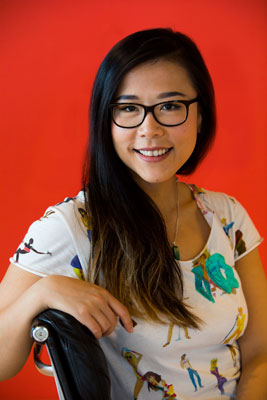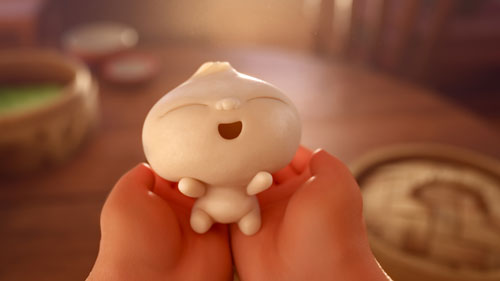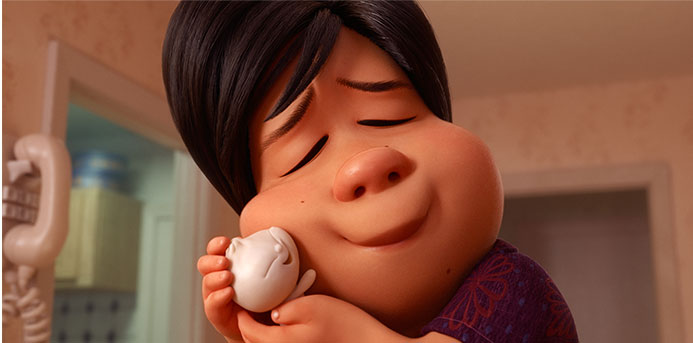Hollywood’s biggest night is almost here, the 91st Academy Awards. Ever since the great #OscarsSoWhite controversy of 2015 … and 2016, when, for the second consecutive year, all 20 lead and supporting actor nominees were white, with each’s year’s nominees now come important conversations about representation and inclusion in Hollywood. The concerns are legitimate: A study by the USC Annenberg School for Communication and Journalism found that between 2007 and 2017, diversity of representation in Hollywood films remained for the most part stagnant.
So what about this year?
There’s plenty to celebrate. The Academy has nominated a more diverse group of actors. Marvel’s Black Panther, a film Mikey Mason of Geeks of Color describes as “a lightning rod of representation, in a time where black people feel so belittled and not paid attention to,” is up for Best Picture and, according to Richard Roeper, just might have a chance. Mahershala Ali, Regina King, and Spike Lee are all also among Roeper’s predicted winners. But, because 2019 is no time to get complacent, let’s not overlook the fact that there is not one film among the eight Best Picture and five Best Director nominees directed by a woman.
This is but one reason to turn your attention to the Best Animated Short category. If you haven’t had the chance to see Bao, Pixar’s first female-directed short film, which ran in theaters ahead of Best Animated Film nominee Incredibles 2, the short, which is both moving and shocking, is truly worth your nine minutes, and Chinese-Canadian director Domee Shi is definitely one to watch.

Last fall, in support of the traveling exhibit The Science Behind Pixar, Shi and producer Becky Neiman-Cobb paid a visit to Chicago’s Museum of Science and Industry to share insights into the technical process of creating a Pixar film, as well as what brought them to work together on the film and made it the beautiful piece it is.
Let’s start with a quick summary of the film: A Chinese mom living in Toronto’s Chinatown grapples with the loneliness of an empty nest until one of her dumplings springs to life as a dumpling boy. But her little dumpling, like all children, grows up, and becomes a rebellious teenager who trades home with mom for a blond girlfriend. Desperate to stop her “son” from leaving her, [SPOILER ALERT] mom eats the dumpling. It’s only after she eats the dumpling that we learn that the dumpling is really a metaphorical stand-in for her grown son, who looks just like the dumpling.
The inspiration
Shi says her own obsession with food, “not just eating it, but drawing it as well,” was key to her inspiration for making her main character a dumpling. “I’ve always loved food fairy tales because I find them so cute and strange.”

But it was also her relationship with her “very present,” very protective mom that really sealed the deal: “When I started to grow up it was hard for her to let go,” Shi explains. “In fact, she’d often hold me close and say, ‘Oh Domee, I wish I could put you back in my stomach so I knew exactly where you were at all times.’” Shi says, “that sweet and creepy love of this mom who learns to let go of her little dumpling was the spark that became the heart of this short.”
Another one of the film’s key “ingredients,” as Shi puts it, is Toronto’s Chinatown, and, more broadly: “Chinatowns everywhere—not just in Toronto, but Chicago and New York and San Francisco. I find them to be such vibrant, lively nostalgic places and I really wanted to honor that setting in this short. And I wanted to honor the equally vibrant residents of Chinatown, the Chinatown grannies. I love them. I wanted to celebrate their bold colors, their picking out the freshest produce, their determination to get the best deal and to mow down anybody in their way. I think they’re bad asses.”
Mom and dumpling’s shopping trip in Chinatown is just one of the many colorful snapshots of the blending of Chinese and Western cultures in a city like Toronto with a thriving immigrant community. This push and pull between cultures is an important undercurrent running throughout the short.
Path to the Oscars
So how did Shi’s delightfully quirky brainchild find its way to the big screen, accompanying the highest-grossing animated film of all time?
Shi, who started at Pixar as an intern in 2011, only seven years before Bao was released, says she originally began Bao as a personal side project, but “on a whim,” pitched it to Inside Out director Pete Doctor, who became a mentor to Shi when she worked as a storyboard artist on the film. Though she thought the studio would never go for a story “this off-kilter,” “they loved the weirdness of it and they officially greenlit it in 2015 as the next official Pixar theatrical short.”
Shi reunited with producer Becky Neiman-Cobb, whom she’d worked with on Inside Out, and who had just wrapped production on Finding Dory as production manager. Neiman-Cobb explains why the Pixar shorts program is such an important breeding ground for new talent and new ideas: “Part of the tradition of the shorts program at Pixar is it’s a place to try out new technology as well as give new leadership opportunities, and Bao was no exception,” she says. “It was the first time Domee directed and that I produced.”
So about that shocking scene…
Shi explains that in an early version of her storyboarding, the scene was going to be even more dramatic, with mom going on a rampage, “eating everything in sight.” Instead they settled on what Shi calls “a quick crime of passion.” She explains, “I found it was quicker, more emotional, slightly less gross, and it made the act a little bit more digestible for viewers. But it was still pretty shocking.”
Ultimately, Shi says, “It’s about children growing up and parents having to accept that change.”
Breaking new ground
I asked Shi if she thinks this short could serve as a groundbreaker for the studio, encouraging others to get a little more risky with their Pixar work. “I totally hope so,” she says. “I think Sanjay’s Super Team, the short that came out in front of The Good Dinosaur, was definitely the trailblazer for us to get our short made, as well as Coco. I think the studio has definitely started embracing these different creative ideas from places they don’t normally tap.”
She echoes Neimann-Cobb’s sentiment that the shorts program has provided a place within Pixar to “test new leadership and new technology without the burden of making money at the box office. We have more freedom to be more experimental because we don’t have that pressure so I think it’s a really great testing ground for new ideas, new talent and new styles,” Shi says.
Regardless of the outcome on Oscar night, Bao‘s test is one that has clearly proven successful for Shi and for Pixar: It’s been announced that Shi is beginning work on her first full-length feature with the studio.
More from Make It Better:
- “Black Panther” Star Danai Gurira Talks Zimbabwe, Finding Her Passion, and the Drive to “Do More”
- 13 Reasons a Disney Cruise is Worth Every Penny
- Disney Legend Alan Menken Talks Live-Action ‘Aladdin,’ ‘Little Mermaid,’ and that Time Lin-Manuel Miranda Begged for his Autograph
 Editor in Chief of Make It Better, Brooke Geiger McDonald is a Chicago native and Northwestern University grad with a Master’s in English Literature from King’s College London. She’s worked for O, The Oprah Magazine and Shape magazine in New York and for various book publishers in London. Back home in Chicago, she’s outnumbered by her husband and two sons, and the four of them are certifiable Disney and Star Wars fanatics, always counting down the days to their next Disney vacation. Her favorite Her favorite nonprofits to support include organizations focused on environmental conservation and combatting climate change, such as the Environmental Defense Fund and Shedd Aquarium. Follow her on Instagram: @brookegmcdonald
Editor in Chief of Make It Better, Brooke Geiger McDonald is a Chicago native and Northwestern University grad with a Master’s in English Literature from King’s College London. She’s worked for O, The Oprah Magazine and Shape magazine in New York and for various book publishers in London. Back home in Chicago, she’s outnumbered by her husband and two sons, and the four of them are certifiable Disney and Star Wars fanatics, always counting down the days to their next Disney vacation. Her favorite Her favorite nonprofits to support include organizations focused on environmental conservation and combatting climate change, such as the Environmental Defense Fund and Shedd Aquarium. Follow her on Instagram: @brookegmcdonald

